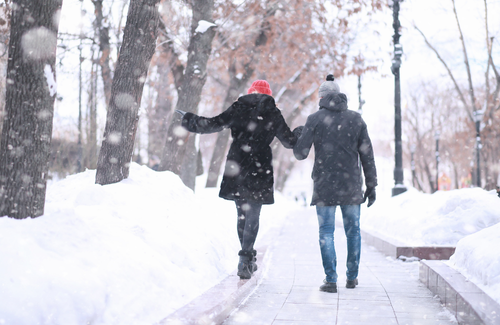How to Stay Active During the Winter

Staying Active When the Temperature Drops
When the weather turns cold and daylight hours shorten, it’s easy to let physical activity slip. But staying active through the winter is one of the best things you can do for your body and mind. Movement keeps your joints mobile, strengthens your immune system, supports circulation, and helps prevent the stiffness or fatigue that often comes with inactivity.
At Rehab8, our physiotherapists, massage therapists, and chiropodists often see more patients struggling with tight muscles, sore joints, and overuse injuries during the winter months. The good news? With a few mindful adjustments, you can maintain your fitness safely and comfortably all season long.
1. Embrace Indoor Workouts
If running or cycling outdoors isn’t appealing in the cold, bring your workout indoors. Try:
- Bodyweight exercises such as squats, lunges, and planks.
- Yoga or Pilates to build mobility and balance.
- Resistance bands or light weights for strength training.
- Online guided workouts or virtual fitness classes.
Physiotherapists can design a custom home exercise plan suited to your goals and any existing injuries or limitations. This helps you maintain strength and mobility even without access to a gym.
2. Warm Up Properly
Cold muscles are more prone to injury. Spend at least 5–10 minutes warming up before any activity.
Gentle dynamic movements, like arm circles, marching, or leg swings, help increase blood flow and joint lubrication.
Our massage therapy team often treats winter-related strains that could have been prevented with a good warm-up and cool-down routine. Regular remedial or sports massage also helps reduce muscle tension and improves recovery between workouts.
3. Layer Up and Move Outdoors Safely
Outdoor activities like brisk walking, snowshoeing, or skating can be great ways to stay active, if you prepare properly.
- Dress in breathable layers that you can remove as you warm up.
- Wear proper footwear with traction to prevent slips and falls.
- Stay visible with reflective gear if you’re out after dark.
Our chiropodists recommend checking your winter footwear for proper support, cushioning, and fit. Foot pain, cold toes, and blisters are common issues that can limit winter activity, especially for those with flat feet, diabetes, or circulation problems.
4. Focus on Mobility and Flexibility
Winter often means more time sitting, whether at work or at home. This can tighten the hips, neck, and lower back.
Incorporating gentle stretching or mobility sessions a few times a week can help counteract stiffness.
Our physiotherapists can guide you through movement-based treatments to improve posture, balance, and flexibility, so you can move with ease, even when it’s cold outside.
5. Listen to Your Body
The combination of cold weather and lower energy levels can make you more susceptible to injury or fatigue. If you notice discomfort, don’t push through pain. Early assessment and treatment from a physiotherapist can prevent small issues from turning into major setbacks.
Regular maintenance sessions, such as massage therapy for muscle recovery or chiropody care for foot alignment and skin health, help your body perform at its best throughout the winter months.
Stay Moving, Stay Well
Staying active in the winter doesn’t have to be complicated, it’s about consistency and mindful movement. Whether you’re training indoors, walking outdoors, or simply trying to move more each day, every bit counts toward your overall health and well-being.
At Rehab8, we’re here to help you move better, align your body, and heal through every season.

.png)